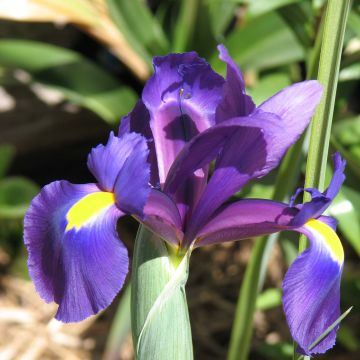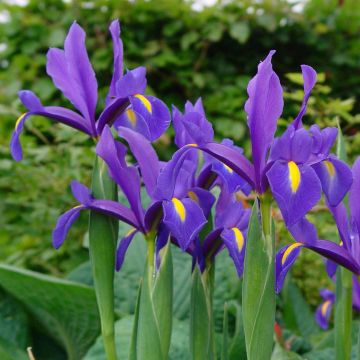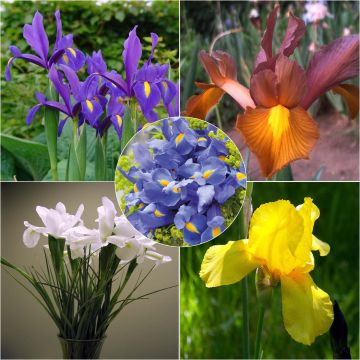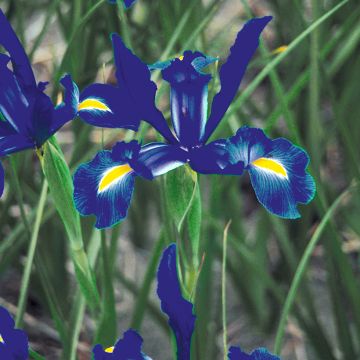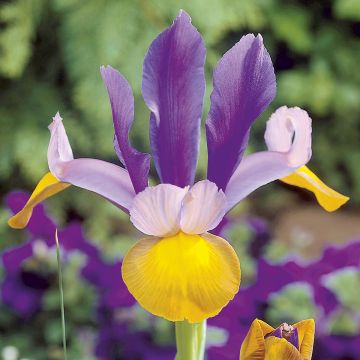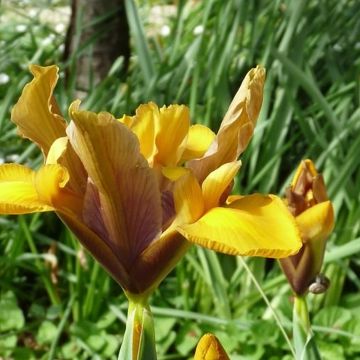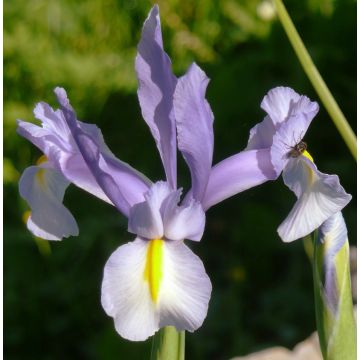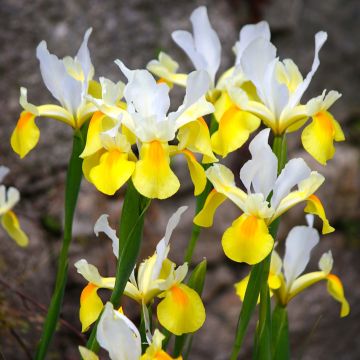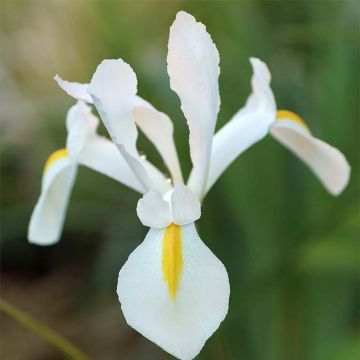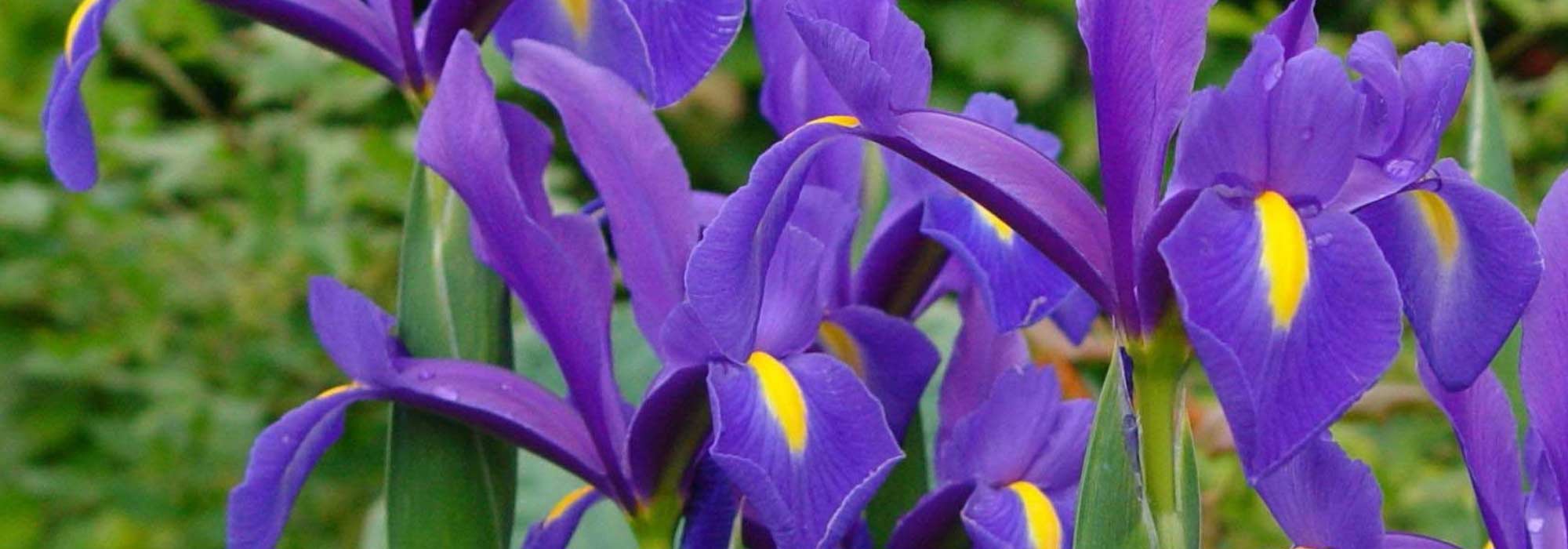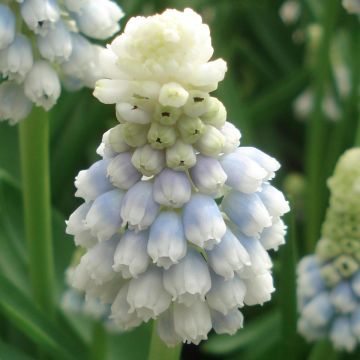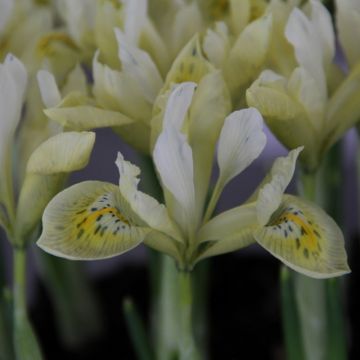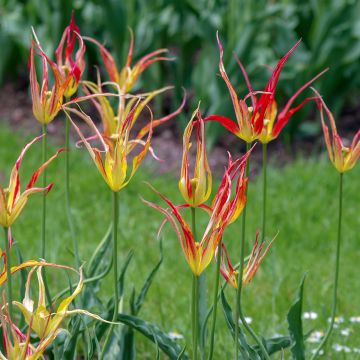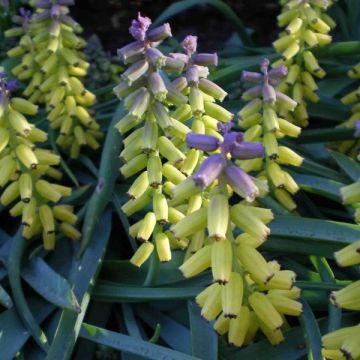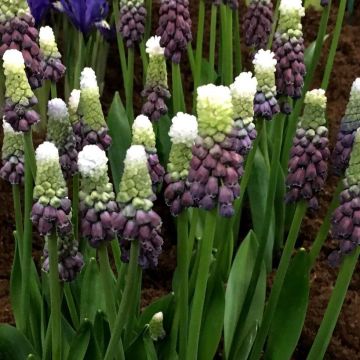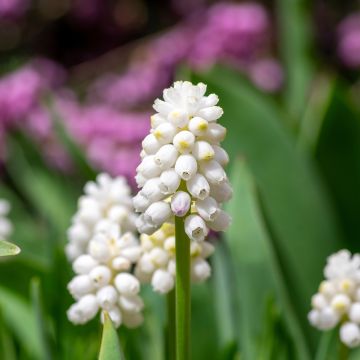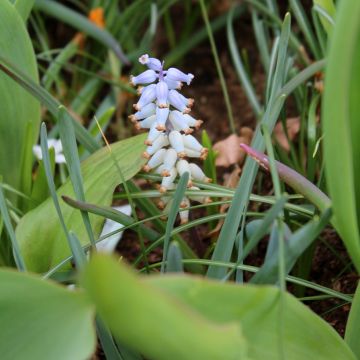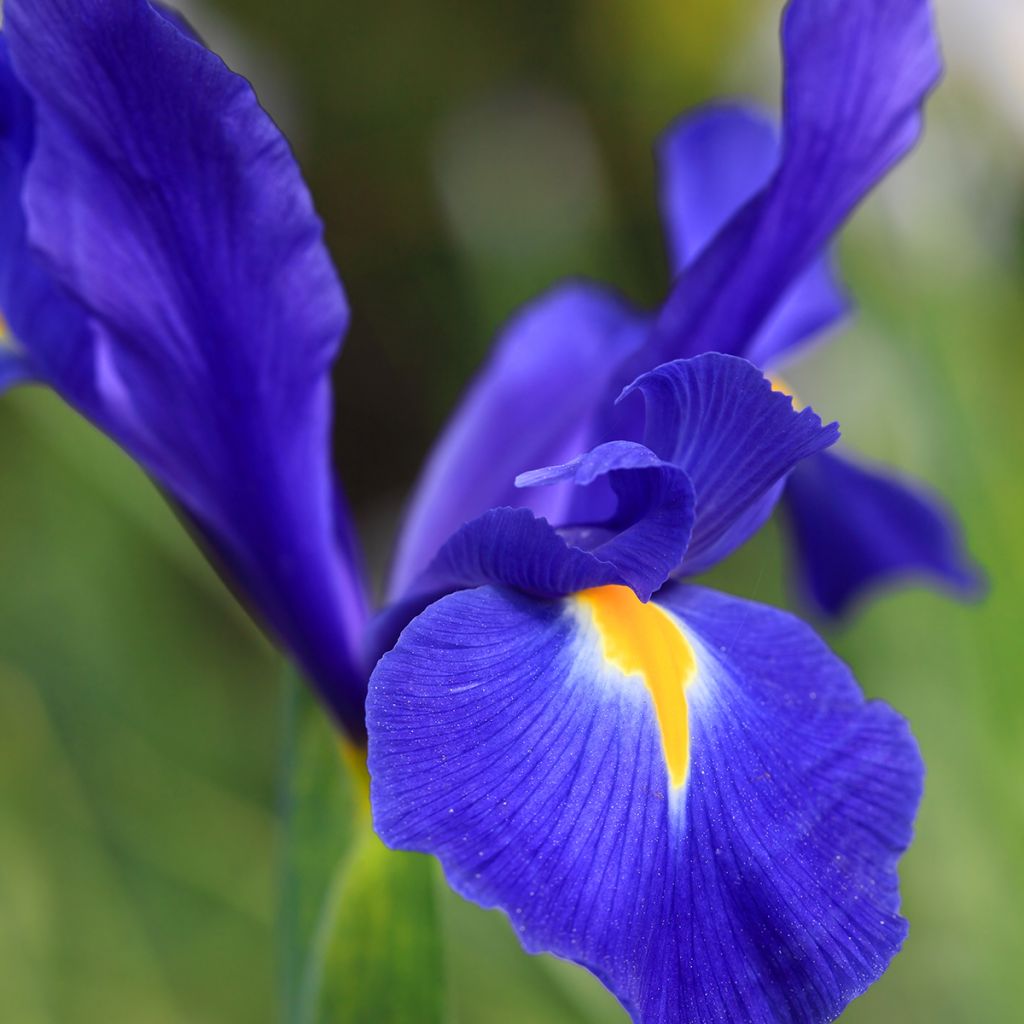

Iris x hollandica Professor Blaauw
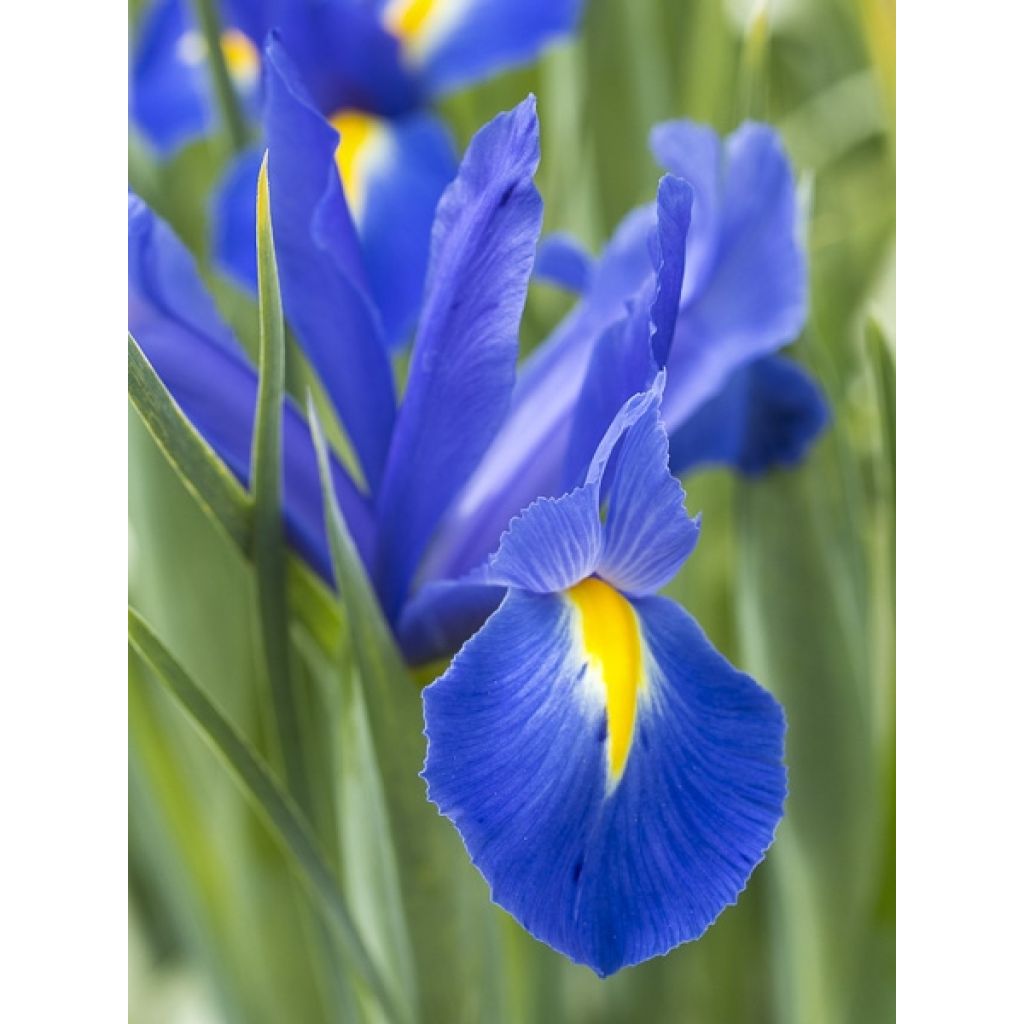

Iris x hollandica Professor Blaauw
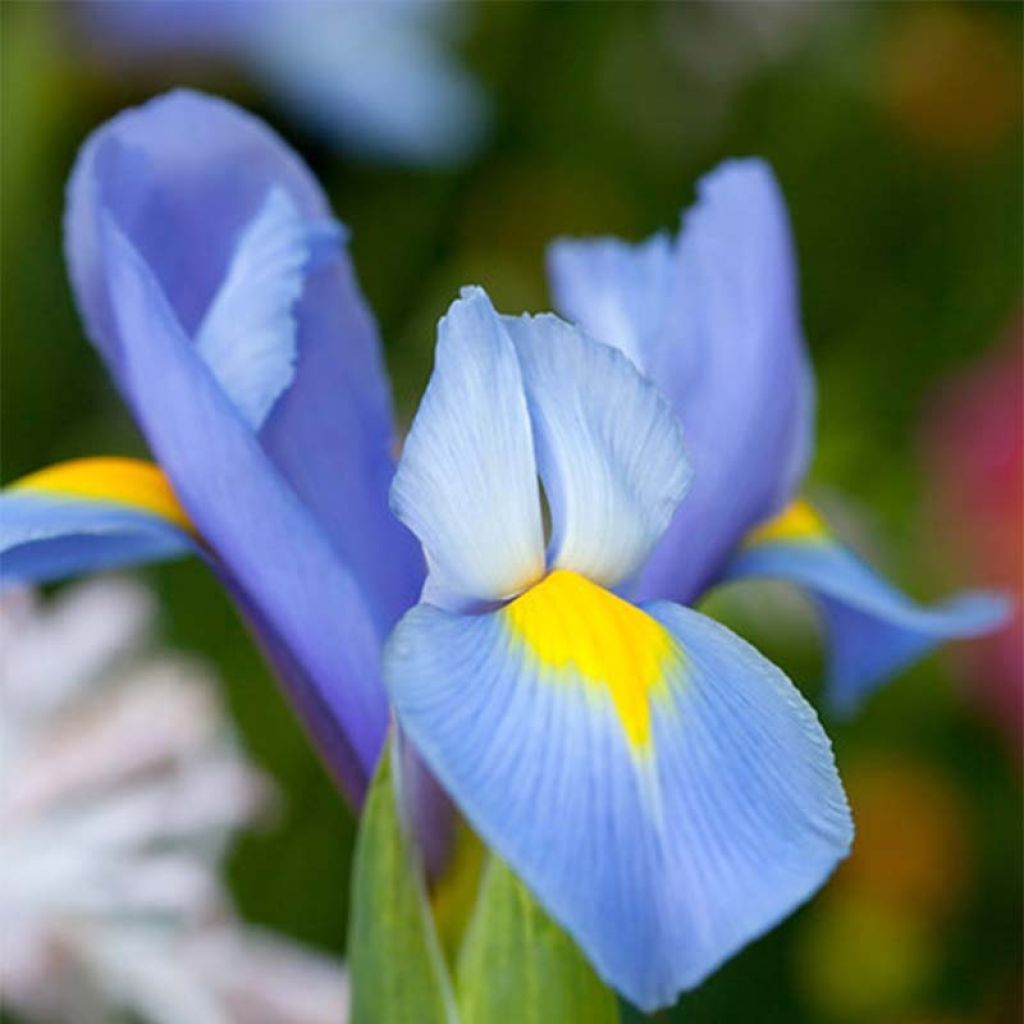

Iris x hollandica Professor Blaauw
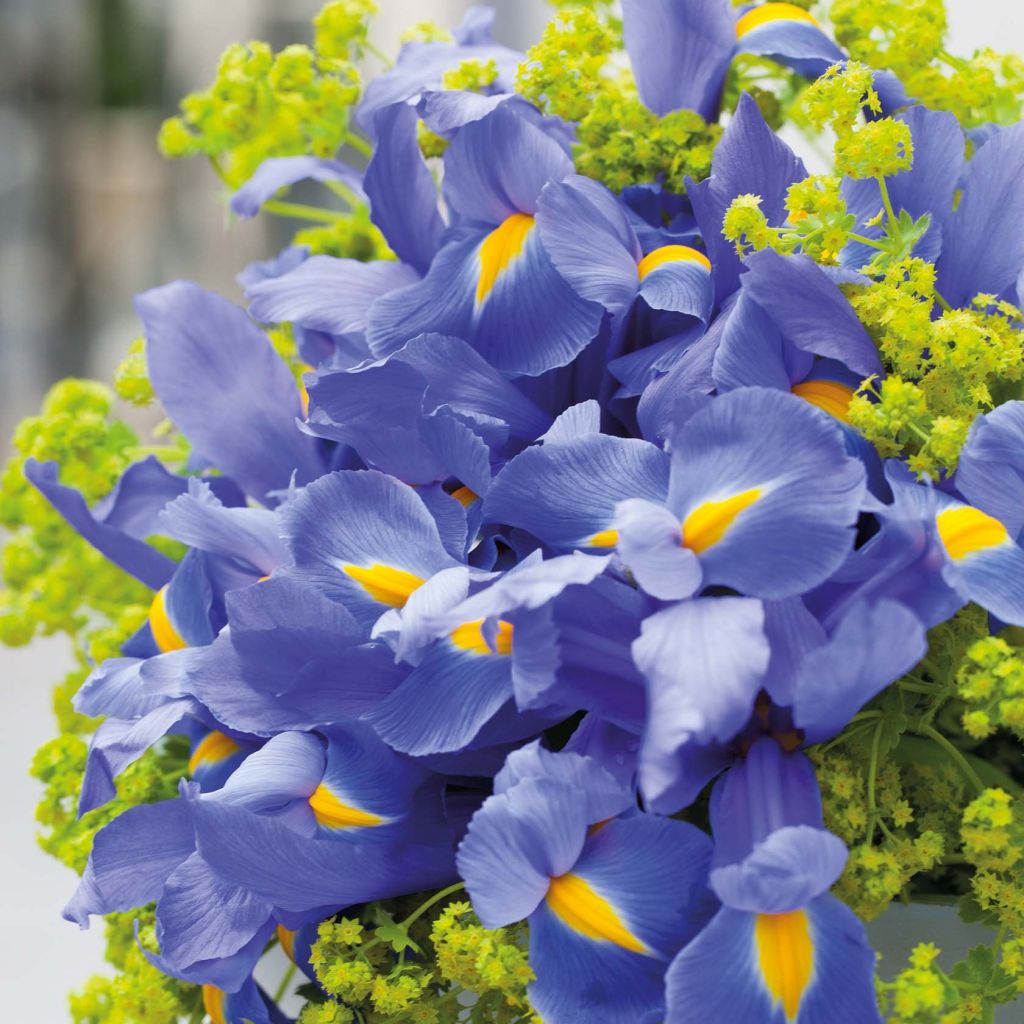

Iris x hollandica Professor Blaauw
View more pictures
Hide images

Dominique D.

Iris (x) hollandica Professor Blaauw
Dominique D. • BE

Dominique D.

Iris (x) hollandica Professor Blaauw
Dominique D. • BE
Iris x hollandica Professor Blaauw
Iris x hollandica Professor Blaauw
Dutch Iris
Special offer!
Receive a €20 voucher for any order over €90 (excluding delivery costs, credit notes, and plastic-free options)!
1- Add your favorite plants to your cart.
2- Once you have reached €90, confirm your order (you can even choose the delivery date!).
3- As soon as your order is shipped, you will receive an email containing your voucher code, valid for 3 months (90 days).
Your voucher is unique and can only be used once, for any order with a minimum value of €20, excluding delivery costs.
Can be combined with other current offers, non-divisible and non-refundable.
Why not try an alternative variety in stock?
View all →This plant carries a 6 months recovery warranty
More information
We guarantee the quality of our plants for a full growing cycle, and will replace at our expense any plant that fails to recover under normal climatic and planting conditions.


Would this plant suit my garden?
Set up your Plantfit profile →
Description
The Iris 'Professor Blaauw is a variety of Dutch Iris that was awarded in England in 1994 for its ornamental qualities and ease of cultivation. This bulbous iris produces large, brightly coloured flowers in late spring for 2 to 3 weeks. The flowers have a stylish shape and stand out for their elegance in the garden and in bouquets. This particular variety has two shades of sky blue and blue-violet, with a small golden spot at the center of each sepal.
Dutch Irises, or bulbous irises, have an underground storage organ in the form of a bulb, unlike their famous cousins, the Bearded Irises or Garden Irises. Belonging to the same botanical family as the Bearded Irises, the iridaceae family, they also differ by the absence of "beards," those pretty little fluffy and colourful tongues found on the drooping sepals of Bearded Irises. Dutch irises have never grown wild in Dutch soil, but are the result of cross-breeding between two main botanical species: Iris filifolia, sometimes confused with Iris xyphium which resembles it, both originating from Spain and North Africa, and Iris tingitana, from Tangier and northern Morocco. The genealogy of Dutch hybrids can sometimes be confusing, but the result is always remarkable. Their flowers, somewhat underutilized in the garden, are highly appreciated in floristry.
The 'Professor Blaauw' cultivar forms an upright and very narrow clump over time, reaching a height of 60 cm (24in) when in bloom. This perennial spreads indefinitely through the production of bulblets. It blooms in late spring, usually in May-June, for 2 to 3 weeks, on wind-resistant stems. Its solitary or paired flowers on the stems have a diameter of 8 to 10 cm (3 to 4in) and are relatively slender compared to those of Bearded Irises, but undoubtedly elegant. They consist of 3 upright, translucent, small petals in a celestial blue. Beneath this trio are 3 almost horizontal sepals, closely linked to the dentate petaloid styles on the edges, arranged in quincunx. Wider and spatulate, they are a vibrant blue-violet, illuminated by a beautiful golden spot. Each flower can live for 5 to 7 days, even in a vase. The bulb is round, 2 to 3 cm (1in) wide, covered with a fibrous tunic of rosy beige. It produces some linear, thin, and leathery leaves, somewhat resembling those of a grass, with a slightly glaucous green colour, often lightly striated and folded in half towards the ground. They often appear in autumn, persist to varying degrees depending on the severity of the winter, and dry up during the dormant period in summer.
Less known and less used by gardeners than Bearded Irises, Dutch Irises are nevertheless easy to cultivate in fertile soil and have undeniable elegance. Plant them in groups of 10 to 20 bulbs of the same variety: they will come back year after year to offer you more and more elegant and joyful flowers, which go well with the spring flowering of flowering shrubs. They also look stunning when planted among perennials such as peonies and daylilies, which will hide their absence in summer when they are dormant. Their Mediterranean origins give them excellent adaptation to summer drought. Finally, pick their flowers to make bouquets with roses, arums, lilies, or even late tulips. All irises need a sunny exposure to bloom well. Give them at least half a day of full sun.
Iris x hollandica Professor Blaauw in pictures


Plant habit
Flowering
Foliage
Botanical data
Iris
x hollandica
Professor Blaauw
Iridaceae
Dutch Iris
Cultivar or hybrid
Planting and care
Plant the bulbs in September-October, in a sunny location, in ordinary but fertile, deep and well-drained soil (even sandy or rocky). Add a little coarse sand or compost to your soil if necessary. Plant the bulbs 10 cm (4in) deep and preferably in groups of the same variety, spaced 10-15 cm (4-6in) apart. Cut off the faded flowers at their base, taking care to leave the stem. Continue to water the plants at their base. Once the foliage turns yellow, remove it and leave the bulbs in place for them to bloom again the following year. After flowering, water with liquid fertilizer three times at one-month intervals. Leave the bulbs in place for several years. Dutch Irises rest in summer, preferably in dry soil. Their bulbs are sensitive to consistently moist soil during the summer resting period.
Divide the clumps after 4 to 5 years, when they appear less floriferous. Do this once the leaves have dried, at the beginning of the resting period.
The leaves of the Dutch Iris should only be cut when dry; they allow the bulb to replenish its reserves for the following spring's flowering. Remove the pods as they form, so that the plant does not exhaust itself producing seeds.
Planting period
Intended location
Care
Planting & care advice
This item has not been reviewed yet - be the first to leave a review about it.
Similar products
Haven't found what you were looking for?
Hardiness is the lowest winter temperature a plant can endure without suffering serious damage or even dying. However, hardiness is affected by location (a sheltered area, such as a patio), protection (winter cover) and soil type (hardiness is improved by well-drained soil).

Photo Sharing Terms & Conditions
In order to encourage gardeners to interact and share their experiences, Promesse de fleurs offers various media enabling content to be uploaded onto its Site - in particular via the ‘Photo sharing’ module.
The User agrees to refrain from:
- Posting any content that is illegal, prejudicial, insulting, racist, inciteful to hatred, revisionist, contrary to public decency, that infringes on privacy or on the privacy rights of third parties, in particular the publicity rights of persons and goods, intellectual property rights, or the right to privacy.
- Submitting content on behalf of a third party;
- Impersonate the identity of a third party and/or publish any personal information about a third party;
In general, the User undertakes to refrain from any unethical behaviour.
All Content (in particular text, comments, files, images, photos, videos, creative works, etc.), which may be subject to property or intellectual property rights, image or other private rights, shall remain the property of the User, subject to the limited rights granted by the terms of the licence granted by Promesse de fleurs as stated below. Users are at liberty to publish or not to publish such Content on the Site, notably via the ‘Photo Sharing’ facility, and accept that this Content shall be made public and freely accessible, notably on the Internet.
Users further acknowledge, undertake to have ,and guarantee that they hold all necessary rights and permissions to publish such material on the Site, in particular with regard to the legislation in force pertaining to any privacy, property, intellectual property, image, or contractual rights, or rights of any other nature. By publishing such Content on the Site, Users acknowledge accepting full liability as publishers of the Content within the meaning of the law, and grant Promesse de fleurs, free of charge, an inclusive, worldwide licence for the said Content for the entire duration of its publication, including all reproduction, representation, up/downloading, displaying, performing, transmission, and storage rights.
Users also grant permission for their name to be linked to the Content and accept that this link may not always be made available.
By engaging in posting material, Users consent to their Content becoming automatically accessible on the Internet, in particular on other sites and/or blogs and/or web pages of the Promesse de fleurs site, including in particular social pages and the Promesse de fleurs catalogue.
Users may secure the removal of entrusted content free of charge by issuing a simple request via our contact form.
The flowering period indicated on our website applies to countries and regions located in USDA zone 8 (France, the United Kingdom, Ireland, the Netherlands, etc.)
It will vary according to where you live:
- In zones 9 to 10 (Italy, Spain, Greece, etc.), flowering will occur about 2 to 4 weeks earlier.
- In zones 6 to 7 (Germany, Poland, Slovenia, and lower mountainous regions), flowering will be delayed by 2 to 3 weeks.
- In zone 5 (Central Europe, Scandinavia), blooming will be delayed by 3 to 5 weeks.
In temperate climates, pruning of spring-flowering shrubs (forsythia, spireas, etc.) should be done just after flowering.
Pruning of summer-flowering shrubs (Indian Lilac, Perovskia, etc.) can be done in winter or spring.
In cold regions as well as with frost-sensitive plants, avoid pruning too early when severe frosts may still occur.
The planting period indicated on our website applies to countries and regions located in USDA zone 8 (France, United Kingdom, Ireland, Netherlands).
It will vary according to where you live:
- In Mediterranean zones (Marseille, Madrid, Milan, etc.), autumn and winter are the best planting periods.
- In continental zones (Strasbourg, Munich, Vienna, etc.), delay planting by 2 to 3 weeks in spring and bring it forward by 2 to 4 weeks in autumn.
- In mountainous regions (the Alps, Pyrenees, Carpathians, etc.), it is best to plant in late spring (May-June) or late summer (August-September).
The harvesting period indicated on our website applies to countries and regions in USDA zone 8 (France, England, Ireland, the Netherlands).
In colder areas (Scandinavia, Poland, Austria...) fruit and vegetable harvests are likely to be delayed by 3-4 weeks.
In warmer areas (Italy, Spain, Greece, etc.), harvesting will probably take place earlier, depending on weather conditions.
The sowing periods indicated on our website apply to countries and regions within USDA Zone 8 (France, UK, Ireland, Netherlands).
In colder areas (Scandinavia, Poland, Austria...), delay any outdoor sowing by 3-4 weeks, or sow under glass.
In warmer climes (Italy, Spain, Greece, etc.), bring outdoor sowing forward by a few weeks.






























